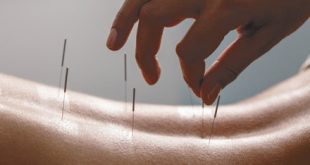Signs, Concerns, and Treatment
By Dr. Michel Saaloukeh – MD, FAAP, IBCLC
Laryngomalacia and stridor can be unsettling for parents of newborns, but being informed about these conditions is crucial.
Laryngomalacia is a common cause of stridor, a high-pitched sound during breathing. While often benign, it’s essential to recognize signs of concern and understand potential treatments.
What is Laryngomalacia?
Laryngomalacia is a condition where the soft tissues of the larynx (voice box) are floppy, causing them to collapse inward during breathing. This collapse leads to partial airway obstruction and the characteristic stridor – a musical or harsh noise when the baby inhales.
Recognizing Stridor: What to Look For
Stridor is the primary indicator of laryngomalacia. It’s typically noticeable during inhalation and may sound like wheezing, snoring, or high-pitched breathing. While many infants exhibit mild stridor, persistent or worsening symptoms could be a cause for concern.
Signs of Concern
1. Increased Effort in Breathing: If your newborn is working hard to breathe, with visible retractions (sucking in of the chest or ribs), it might indicate a more severe airway obstruction.
2. Poor Weight Gain: Laryngomalacia can sometimes interfere with feeding due to breathing difficulties, leading to poor weight gain. Regular check-ups with the pediatrician can help monitor your baby’s growth.
3. Cyanosis: Bluish discoloration of the lips, face, or extremities may suggest inadequate oxygen intake, indicating a need for prompt medical attention.
When to Seek Medical Advice
If you notice persistent or worsening stridor, especially accompanied by signs like increased breathing effort, poor weight gain, or cyanosis, consult your pediatrician promptly. Early detection and intervention are crucial for managing laryngomalacia effectively.
Diagnosis and Evaluation
Diagnosing laryngomalacia involves a thorough examination by a pediatrician or an ear, nose, and throat (ENT) specialist. In some cases, additional tests like a flexible laryngoscopy may be performed to visualize the airway structures.
Possible Treatments
1. Observation: Many cases of laryngomalacia improve on their own as the baby grows. In mild cases, healthcare providers might recommend a “watch and wait” approach, monitoring the condition regularly.
2. Positioning: Keeping your baby in an upright position during and after feeding can minimize symptoms, as gravity helps keep the airway open.
3. Thickening Feeds: For infants experiencing feeding difficulties, adding a thickening agent to breast milk or formula may ease swallowing and reduce symptoms.
4. Surgical Intervention: In severe cases where conservative measures are ineffective, surgical options like supraglottoplasty may be considered. This procedure involves reshaping the tissues of the larynx to alleviate airway obstruction.
Understanding laryngomalacia and its association with stridor empowers parents to recognize potential concerns early on. Regular check-ups, prompt medical attention for concerning symptoms, and collaborative decision-making with healthcare professionals are vital for ensuring the well-being of newborns affected by these conditions. While many cases resolve over time, proactive management can provide the best outcomes for both the infant and their caregivers.
Dr. Michel Saaloukeh, MD, FAAP, IBCLC, is board certified in Pediatrics, Neonatology and lactation. Trained at University of Pittsburgh Medical Centre UPMC, has been practicing for over 15 years in the field of Pediatrics and Neonatology. Dr. Saaloukeh is the medical director of a general pediatrics practice, Comprehensive Pediatric and Neonatal Clinic in Southwest Florida. He is IBCLC certified and is committed to providing breast feeding support to mothers and infants after discharge home from the hospital. With a focus on infants who graduate from the NICU, and their special needs, he is dedicated in providing support following discharge home.
For more information, call 239-422-6020 or visit: www.cpnclinic.com
 Southwest Florida's Health and Wellness Magazine Health and Wellness Articles
Southwest Florida's Health and Wellness Magazine Health and Wellness Articles

